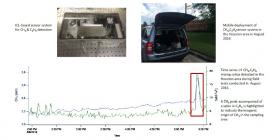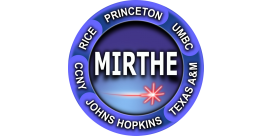ERC Partner Continues Progress on Developing Sensors for Atmospheric Trace Gases
The NSF-funded Mid-Infrared Technologies for Health and the Environment (MIRTHE) Engineering Research Center (ERC) is headquartered at Princeton University. Researchers at one of MIRTHE's partner universities, Rice, are continuing to develop, deploy, and refine sensors for atmospheric trace gases.
In past years these sensors have been used to assess concentrations of atmospheric gases in and near Houston. Measuring amounts of trace gases like ammonia, methane, ethane, nitrous oxide, carbon monoxide, and water vapor in the air is important to understand more fully the environment associated with large population centers. Similar measurements in other areas also have value.
Current work focuses on achieving simultaneous measurements of methane and ethane on a mobile platform. These measurements are meant to help quantify leakage rates of natural gas from the Houston distribution system.
In collaboration with Dr. Frank Tittel (Professor, Rice) and his group, members of Rice's Griffin Research Group continue the development work. Photos in the figure show the interband cascade laser (ICL) sensor and an automobile-based sensor installation. The accompanying graph illustrates types of data gathered.



